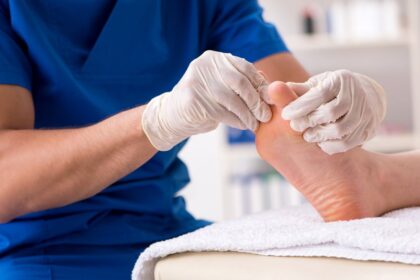Plastic surgery helps people achieve their desired appearance through medical procedures. These operations address both cosmetic concerns and functional issues. Understanding different types of plastic surgery empowers you to make informed decisions about your body and health. Here are five typical plastic surgery procedures, from liposuction to rhinoplasty, and what to expect during recovery:
1. Breast Augmentation
Breast augmentation aims to increase breast size using implants or fat transfer. This popular procedure helps women who want fuller breasts or need reconstruction after medical treatment. The surgery involves placing silicone or saline implants under the breast tissue or chest muscle. Your surgeon makes small incisions to minimize scarring. The procedure typically takes one to two hours under general anesthesia.
2. Liposuction Treatment
Liposuction removes excess fat from specific areas of the body through suction. The procedure targets stubborn fat deposits that don’t respond to diet and exercise. Your surgeon makes tiny incisions and inserts a thin tube that breaks up fat cells and suction them out of your body. Modern techniques use ultrasound or laser energy to make fat removal easier and more precise.
Good candidates maintain a stable weight but struggle with localized fat deposits. Typical treatment areas include the abdomen, thighs, arms, and chin. The procedure works best for people with good skin elasticity. Recovery involves wearing compression garments for several weeks. Swelling and bruising are normal but fade over time.
3. Rhinoplasty Procedure
Rhinoplasty is a surgery that reshapes the nose to enhance appearance or improve breathing. It can address issues like a prominent bump, wide nostrils, or a crooked nose. During the procedure, the surgeon reshapes the bone and cartilage inside your nose. This may involve making incisions inside the nostrils or a small cut across the base of the nose. The specific technique depends on your goals and the shape of your nose.
Rhinoplasty serves both cosmetic and medical purposes. Some people need it to fix breathing problems caused by structural issues. Others pursue it to change their nose’s size or shape for aesthetic reasons. Swelling after surgery may gradually decrease, with initial swelling reducing within a few weeks.
4. Facelift Surgery
Facelift surgery tightens loose skin and muscles in the face and neck. This procedure addresses signs of aging like sagging skin, deep wrinkles, and jowls. The surgery involves making incisions around the ears and sometimes at the hairline. Your surgeon lifts and repositions facial tissues, removes excess skin, and tightens underlying muscles. The procedure typically takes three to five hours.
5. Tummy Tuck
A tummy tuck removes excess skin and fat from the abdomen. The procedure also tightens weakened or separated abdominal muscles. Your surgeon makes a horizontal incision across the lower abdomen and removes excess tissue. The remaining skin is pulled down and sutured for a smoother, firmer appearance. The surgery may also include repositioning the belly button.
Find a Cosmetic Surgeon Near You
These five plastic surgery types address different aesthetic and functional concerns. Each procedure has unique benefits, risks, and recovery requirements. Your individual goals, health status, and anatomy all influence which surgery might be right for you. Research thoroughly and consult with board-certified plastic surgeons before making any decisions. A qualified surgeon will evaluate your specific situation and help you understand realistic outcomes.









